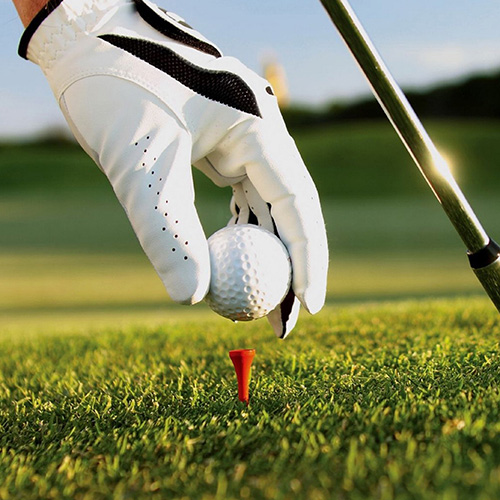Keys to Hitting Long Irons

Do you struggle hitting clean or accurate shots with your long irons? Imagine how much your game would improve if you had confidence gripping your 3–, 4–, and 5–iron. The first step to mastering your long iron play is to clear your head of thoughts that can lead to trouble. Two common thoughts are:
This is a long shot, so I need to swing harder.
This thought leads to tension in your grip, overswinging, and/or swaying back on your takeaway. These actions will decrease clubhead speed and your chances of solid contact. Swing with the same tempo that you would hitting an 8–iron.The clubface has less loft, so I need to help lift the ball in the air. Trying to lift the ball can cause your swing (and clubface) to ascend too early. You’ll either hit the ball thin (with the bottom of the club), or worse, top the ball and hit a grounder.
Trust the loft of the clubface to lift your ball into the air. Keep your swing on a path as if you were hitting through two golf balls.
Keys to Hitting Long Irons
Hitting long irons effectively is beneficial on par 5s and lengthy par 3s and 4s. Here are a few tips to help your ball striking.
Move the ball forward in your stance
Position the ball an inch or two forward of center in your stance. This allows for a shallower swing path, which is important to striking the ball cleanly with a longer club. Chunking the ball (hitting the ground first) often occurs because the ball is centered or slightly back in the stance.
Press your weight slightly forward, inside your front leg
Place a little more weight onto your front leg at address. If your weight distribution is 50/50 when you’re perfectly balanced, shift it to 55/45 when using a long iron. This helps keep you from rocking (or swaying) back during your backswing and quiets head movement. It will also help increase your shoulder and hip turn, which are recommended when hitting long irons.
Gather speed through the downswing
Tempo is key when swinging a longer club. A common mistake players make is to increase the speed of their takeaway to generate more power. Keep a steady pace in your backswing and gather speed during your downswing. This will optimize your accuracy and clubhead speed at contact.
Take a shallow divot
Brush top of the grass with your club when striking the ball. Taking too much of a divot promotes a steeper swing, which can lead to chunking the shot. A wedge or 9–iron requires a steep (or more descending) path to the ball. A long iron requires a shallow, sweeping swing.
NJM, a leading property and casualty insurer in the Mid–Atlantic region, is proud to partner with the golf community. Contact your agent or broker, visit njm.com/njsga, or call 833–859–1920.



